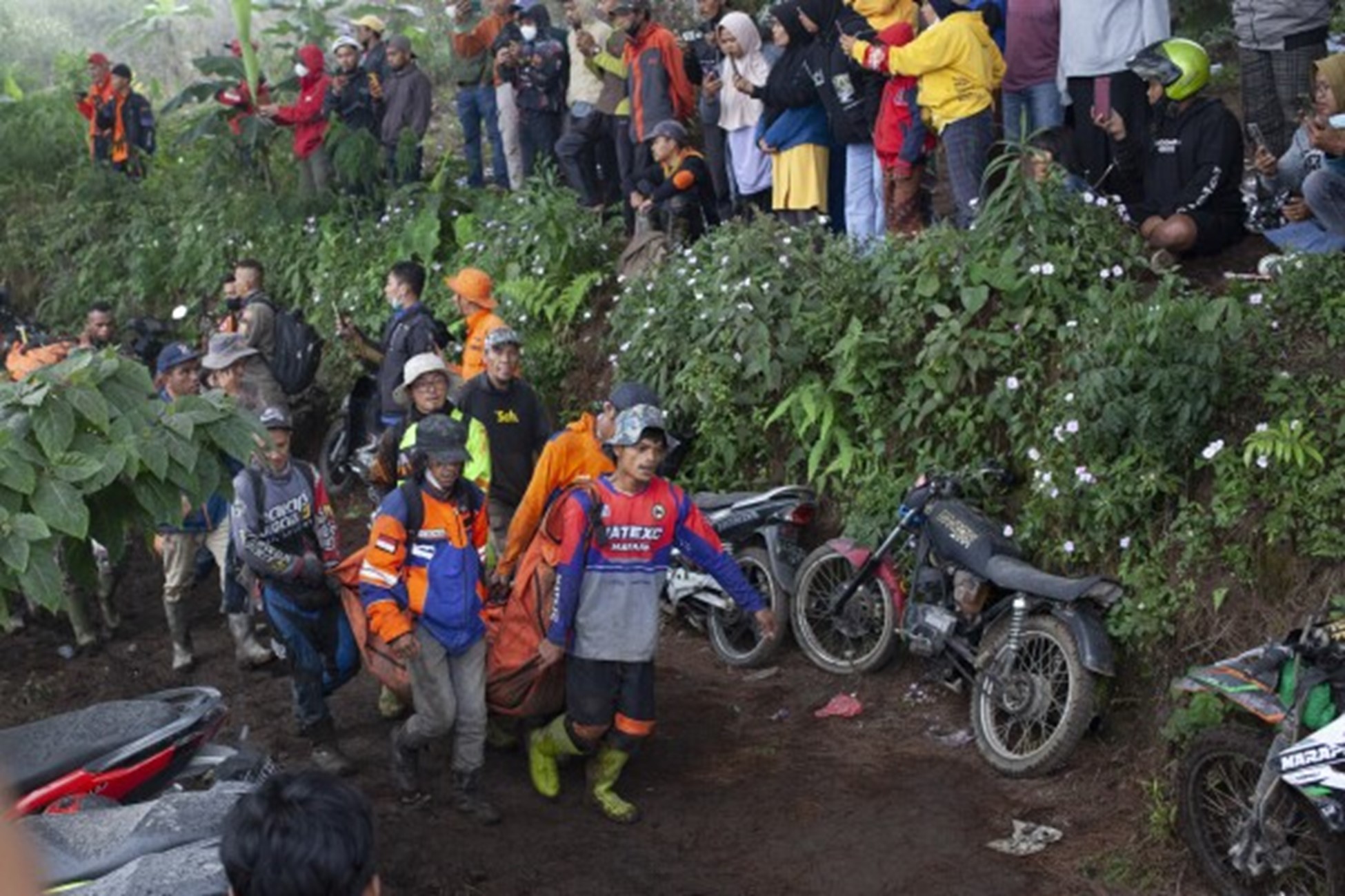The last time smoke rose out of Mt. Marapi it was March 2023 and hardly anyone took notice. Less than a year later, the entire world watched as a devastating surprise eruption endangered 75 hikers on the volcano’s slopes, ultimately killing 23 of them.
On Sunday, December 3rd, the volcano Mt. Marapi located on the island of Sumatra (not to be confused with Mt. Merapi on Java), erupted during a busy hiking day and set off a massive search and rescue operation. With more than 200 people assisting, the teams initially evacuated 49 people and 11 bodies. Efforts continued over Monday and Tuesday despite repeated eruptions, including 5 separate ones on Tuesday December 5th. Ultimately, the death toll came to 23 people, with the final climber being found Wednesday morning within “meters from the eruption site".

A victim’s body is carried out from the Mt. Marapi eruption. Source: AP
Many of the evacuated hikers needed immediate medical care and the search teams had ambulances waiting at the bottom of the slopes to take them to two separate hospitals, Padang Pajang and Bukit Tinggi. On Tuesday, there were 12 people confirmed to be patients at the hospitals for burns and fractures.
Volcanic eruption can cause multiple types of injuries including ash asphyxiation, thermal injuries, blunt trauma, and skin and lung irritation. The likelihood of each of these depends on the type of eruption, which can include explosions, rivers of hot air known as pyroclastic flows, lava flows, and mud slides. All of these can have extremely deadly effects. The 57 people who instantly died on the May 18, 1980 eruption of Mt. St. Helens succumbed to ash asphyxiation. Mud slides (otherwise known as lahars) were the major cause of death in the eruption of Nevado del Ruiz in Colombia 1985, one of the deadliest eruptions ever recorded that killed 23,000. Meanwhile, the destruction of Pompeii was caused by pyroclastic flows, with air temperatures of up to 480 degrees flowing down the volcano and instantly killing those in the town. Conversely, eruptions like Krakatoa caused most of their damage by the massive tsunamis that followed the eruption.
In most situations, evacuation and disaster planning is paramount, as there is little that can be done for those immediately within the volcano’s radius. In this case of Mt. Marapi, most of the 23 people found deceased will have to be identified by dental records and fingerprints due to the severity of the burns.
For those outside of the immediate eruption radius, treatment should follow guidelines for acute traumatic injuries, including the MARCH algorithm and checking for scene safety. Most important interventions will include removal to a safer area further from the volcano, stemming any acute bleeding from traumatic injuries, and burn care including cleaning and dressing the wounds and giving fluids. Given the variety of injuries caused by different types of volcanic eruptions, providers should be prepared for multiple different patient presentations and focus on early evacuation.